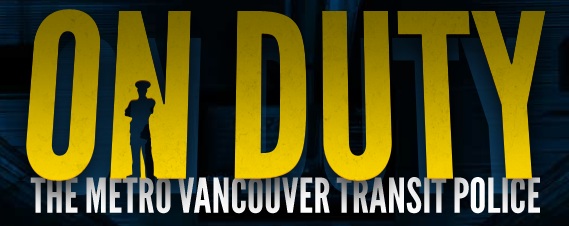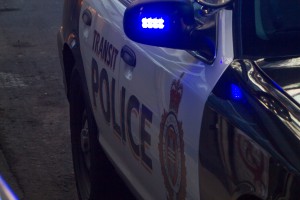Transit Police Academy – Week 1
Transit Police Academy – Week 1

After my first evening in Transit Police Academy, I have to admit that I didn’t know what I didn’t know until I knew it!
Transit Police was created in 2004 to be the thread that ties all the different jurisdictions in the region together.
They are trained exactly as any other police department and have the power of arrest, have access and ability to share information with other police departments and RCMP and are accountable to many authorities both provincial and federal.
We got a really great example of how Transit Police works in the Lower Mainland.
An incident occurred in a Surrey SkyTrain station with the perpetrator then hopping on the train heading to New Westminster committing another crime on the system THEN getting on again and getting into some more trouble in Vancouver.
Before Transit Police, these incidents caused by a single perpetrator included not one, not two but THREE police departments all with varying degrees of information based on the individual situations in their jurisdiction.
Transit Police streamlines the process and they work closely with municipal police departments as their jurisdiction expands across the entire province!
One of the major concerns I hear from riders, (and hey, I’ve thought it too!) is: “Where ARE the Transit Police? I don’t see them except checking fares!”
The short answer is that they can’t be everywhere at once. Here’s the long answer:
Teams of two try to stay near the system to jump on and off the train if needed to be at emergencies quickly and spend lots of time on and near major bus loops. But they are constantly moving.
The breakdown of time is about 1/3 each for dealing with calls, administrative paperwork and patrolling the system.
A full Transit Police department is 110 officers. Right now, they are at about 103. And yes, they’re hiring if you’re interested!
There are the day and evening shifts with staffing 24/7. Officers are four days on and four days off. The split is about 10 units during the day and 12 (or more) in the peak afternoon and evening times.
However, I think it’s their service delivery model that is particularly interesting.
The new model in place now comes out of an independent report from Simon Fraser University that included surveys, workload analysis, time and motion and predictive analysis.
Transit Police implemented their suggestions to create a hub system.
There are 6 major hubs along the SkyTrain system where Transit Police officers report to and from. These are: Bridgeport, Waterfront, Broadway/Commercial, Metrotown, Lougheed and Surrey Central. There are smaller hubs at many other stations as well.
The hub stations were chosen based on the following criteria:
- Call density
- Volume of rail passengers
- Volume of bus traffic in loops
- Volume of bus passengers
- Customer perception of safety
This creates a type of geographical “beat” for officers on the system with zones they patrol allowing them to get to know the neighbourhoods and people.
This week we will be exploring intelligence led policing, communications with their Operations Communications Centre and the On Duty app.
Also, we’ll be looking at the 87-77-77 text line.
FYI! In one year, Transit Police received 31,000 texts with tips and concerns about situations on the system.
I’m genuinely learning a lot and I’m happy to pass that on to you, Buzzer readers. Look out for my new post next week!
Author: Adrienne Coling






